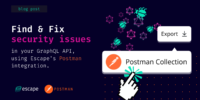Welcome to the dynamic world of Application Programming Interfaces (APIs), where innovation is the heartbeat of digital connectivity. In this guide, we’ll explore quick tips for staying at the forefront of API advancements, ensuring your integration strategies remain cutting-edge and responsive to the evolving needs of the tech landscape.
The API Horizon: Where Innovation Meets Integration
As digital ecosystems continue to expand, APIs play a pivotal role in enabling seamless communication between diverse software applications. Staying ahead in the API game requires a combination of foresight, adaptability, and a keen eye for emerging trends.
Tip 1: Embrace GraphQL – A Paradigm Shift in API Design
GraphQL, with its flexible and efficient querying capabilities, represents a significant leap forward in API design. By allowing clients to request only the data they need, GraphQL minimizes over-fetching and under-fetching of information, enhancing the efficiency and speed of data retrieval. Embracing GraphQL can give your APIs a competitive edge in delivering a more tailored and performant user experience.
Tip 2: Leverage RESTful Best Practices – The Tried and True ️
While GraphQL gains traction, RESTful APIs remain the bedrock of many digital architectures. Ensure your APIs adhere to RESTful best practices, emphasizing resource-based endpoints, statelessness, and a clear separation between client and server concerns. This timeless approach ensures compatibility and accessibility while maintaining a scalable and maintainable API architecture.
Tip 3: Explore API Versioning Strategies – Balancing Innovation and Compatibility
API versioning is crucial for managing changes without disrupting existing integrations. Whether through URL versioning, custom headers, or semantic versioning, adopting a robust versioning strategy allows you to introduce new features while maintaining backward compatibility. This balance is essential for preventing disruptions in the services you provide to developers and clients.
Tip 4: Prioritize Security – Shielding Your API Fort ️
Security is non-negotiable in the API landscape. Implement robust authentication mechanisms, enforce secure communication via HTTPS, and regularly audit your API for vulnerabilities. Staying proactive in addressing security concerns builds trust with developers and users, safeguarding your API’s integrity in an increasingly interconnected digital environment.
Tip 5: Embrace OpenAPI Specifications – Documentation as Code
OpenAPI specifications provide a standardized way to describe your API, making it easier for developers to understand and integrate. By treating API documentation as code, you empower developers to explore, test, and integrate your API seamlessly. This approach fosters collaboration and accelerates the adoption of your API within the developer community.
Conclusion: Navigating the API Frontier with Confidence
API advancements are a perpetual journey, and the key to success lies in adaptability and a forward-thinking approach. By embracing new paradigms like GraphQL, adhering to RESTful best practices, implementing effective versioning strategies, prioritizing security, and leveraging OpenAPI specifications, you position your API ecosystem at the forefront of innovation.








